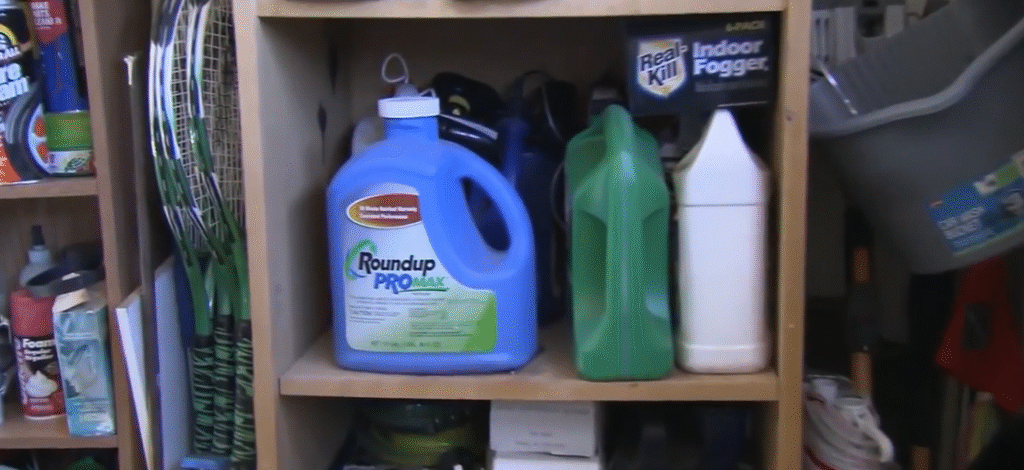This $45 million class-action settlement was essentially about the moral importance of transparency rather than actual physical harm. Monsanto came under heavy fire for failing to disclose the possible health risks associated with glyphosate, a major ingredient in their Roundup, HDX, and Ace weed killers.
According to Scott Gilmore and his fellow plaintiffs, the company’s marketing tactics were especially deceptive, presenting its herbicides as incredibly safe and dependable while ignoring important scientific discussions about their application. They were reclaiming something extremely valuable — the ability to make educated decisions — rather than requesting compensation for illness. The court accepted a settlement that compensated customers who bought these products based on what were considered to be false representations because it found this argument to be particularly strong.
A protracted legal battle was effectively resolved by Judge Vince Chhabria’s ruling. A partial refund of about 20% of the original purchase price was given to eligible customers. Although Monsanto maintained its position—no acknowledgement of misconduct—the final ruling sent a very clear message: corporate responsibility isn’t always dependent on guilt but rather on integrity.
Case Information
| Category | Details |
|---|---|
| Case Title | Scott Gilmore et al. v. Monsanto Company, et al. |
| Plaintiffs | Scott Gilmore, Julio Ezcurra, James Weeks, Amanda Boyette, Anthony Jewell, Paul Taylor, Sherry Hanna, Kristy Williams |
| Defendant | Monsanto Company |
| Court | United States District Court, Northern District of California |
| Case Number | 3:21-cv-8159 |
| Decision Date | June 21, 2022 |
| Settlement Amount | Up to $45 million |
| Type of Case | False Advertising, Breach of Warranty, Consumer Fraud |
| Presiding Judge | U.S. District Judge Vince Chhabria |
| Reference Link | https://www.weedkilleradsettlement.com |

The parameters of the lawsuit were unique. It excluded medical monitoring and personal injury claims, guaranteeing that people with possible glyphosate-related illnesses could still pursue other legal options. This division was especially novel because it recognized the larger ethical dilemma at hand as well as the immediate economic grievance: businesses have an obligation to tell the whole truth when marketing trust in addition to their goods.
This case opened consumers’ eyes. It brought to light the subtle ways in which advertising can alter public opinion. Innumerable homes and farms had come to rely on roundup and similar products. The settlement showed that when scientific uncertainty is ignored for the sake of marketing simplicity, consumer trust can be severely damaged. In sharp contrast to ongoing regulatory reviews and growing global skepticism regarding the substance’s long-term effects, Monsanto maintained that glyphosate posed no health hazard.
The settlement’s larger background came as society began to value openness and sincerity. Consumers now demand evidence, integrity, and accountability; they are no longer content with confident claims. The Gilmore settlement represented that development; it was more than just a monetary arrangement; it was a manifestation of shared understanding. Consumers today are extremely watchful, and when businesses cross persuasive lines, they use legal frameworks to demand clarification.
In a measured and well-crafted response, Monsanto presented the settlement as a sensible move to prevent additional litigation expenses. However, beneath the elegant wording was an unmistakable admission of reputational stress. Bayer, its parent company, has already spent billions of dollars settling personal injury lawsuits related to Roundup’s purported carcinogenic risks. Despite being much smaller, the ethical implications of this $45 million settlement—a corrective action toward transparency rather than liability—made it noteworthy.
Discussions regarding the settlement swiftly spread to online and social media platforms. Economists saw it as a highly effective market correction that forces big businesses to consider reputation just as much as revenue, while environmentalists hailed it as a moral victory. Regular customers talked about how their brand loyalty had changed on social media. Previously reliant only on product performance, honesty now plays an equal role.
Such class actions based on advertising have historically been uncommon, especially in agricultural markets where established corporate giants hold a dominant position. A new precedent was established by Gilmore v. Monsanto. It demonstrated how consumer protection is growing through accuracy and tenacity rather than just confrontation. Representing the Lawyers for Health and Environmental Justice, the plaintiffs’ attorneys contended that deceptive branding has a negative social impact and undermines the basis of informed consumption. This settlement is part of an expanding continuum of corporate accountability because their arguments were remarkably similar to those made in historic cases involving pharmaceutical disclosure and food labeling.
The argument was particularly relevant given the cultural context of “green consumerism.” Consumers are becoming more critical of sustainability, ethics, and transparency across all industries. This sentiment has prompted brands to reconsider their messaging and significantly increased regulatory vigilance. The Gilmore case served as a magnifying glass, revealing how even small marketing omissions can cause widespread deception.
Compliance was a key component of Monsanto’s defense. The company maintained that it adhered strictly to labeling regulations and that glyphosate had been examined and approved by regulatory agencies on multiple occasions. However, as the plaintiffs’ lawyers emphasized, honesty and legality are not always the same thing. Customers are entitled to clarity, not just bare compliance. Throughout every courtroom exchange, that idea—powerfully straightforward yet incredibly human—resonated.
Monsanto’s balance sheet was hardly impacted financially by the $45 million payout. However, it conveyed a moral message that extended well beyond the courtroom. It demonstrated that in contemporary capitalism, collective consumer action is still a very powerful equalizer. It served as a reminder to businesses that once trust has been damaged, it cannot be restored by advertising alone; transparency must be shown.

